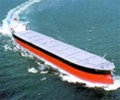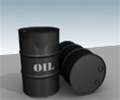Bakken Shale natural gas flaring reaches historical low as production climbs

Natural gas flaring in North Dakota’s Bakken Shale has reached a new record low, according to state data, and new infrastructure slated to enter service soon could push gas production in the play above pre-pandemic volumes.
Flaring of associated natural gas produced in North Dakota’s Bakken has fallen to 6%, according to the latest data released by the North Dakota Industrial Commission. Gross gas production in the state has now crossed 3 Bcf/d, only about 100 MMcf/d of the all-time high reached in November 2019. The state’s oil production, however, is at 1.1 million b/d, which is 400,000 b/d below the all-time high, also reached in November 2019.
The impending completion of WBI Energy Transmission’s North Bakken Expansion natural gas pipeline project is likely to increase the Bakken’s ability push more gas to Northern Border Pipeline for ultimate delivery downstream in the Midwest.
While the project will increase access to prolific Williston Basin production, it could also reduce flaring. Once the expansion is completed, a milestone the company anticipates in December, the added takeaway could be put to the test as production spikes in the region.
Construction is already well underway on the 92.5-mile, 250 MMcf/d project in the northwest corner of North Dakota after the Federal Energy Regulatory Commission approved the project June 1. According to WBI Energy Transmission’s company website, facilities are expected to go into service sometime in December. The proposed route runs through McKenzie County, which produced over 1.44 Bcf/d in summer 2021, up from 1.18 Bcf/d the summer prior, according to S&P Global Platts Analytics.
The WBI system plays a vital role for the Williston Basin in bringing much of the play’s gas to market in the Midwest. This past summer, WBI carried 1.07 Bcf/d in total to other interconnecting pipelines, of which nearly 1 Bcf/d was put on Northern Border. Northern Border generally runs at or near capacity and is essentially the only outlet for Bakken gas. Bakken volumes typically price off AECO and compete for line space with Western Canadian supply heading east along Northern Border.
At 1 Bcf/d this summer, WBI deliveries to Northern Border were up more than 140 MMcf/d from summer 2020 at an all-time high. WBI deliveries accounted for 56% of the Bakken supply pumped on Northern Border, according to Platts Analytics.
This increase supported Bakken gas in gaining even more Northern Border space. Bakken averaged a summer record 74% share of the space on Northern Border, up two points from summer 2020.
Considering WBI’s expansion and its route, it is possible Bakken’s share of Northern Border will increase by as much as the added 250 MMcf/d by summer 2022, as production returning from the coronavirus pandemic has been met with an inability to get to a processing plant.
Midsummer flaring in the Bakken was strong, surging to over 8% for the first time since summer 2020 and exceeding the NDIC flaring cap goal of 9% in July, when 10.4% of the production was flared, according to data from the commission. Since then, rig counts in the Bakken have jumped by at least five and are nearing 30 for the first time since April 2020, according to Enverus. WBI’s impending expansion may be driving the recent build in rigs.
Looking to Platts Analytics’ production forecast, Bakken dry gas production is expected to grow to 2.21 Bcf/d in summer 2022 from 2.06 Bcf/d in summer 2021. WBI’s capacity addition will likely play a big role in the takeaway of that production increase.
Source: Platts

 Hellenic Shipping News Worldwide Hellenic Shipping News Worldwide, Online Daily Newspaper on Hellenic and International Shipping
Hellenic Shipping News Worldwide Hellenic Shipping News Worldwide, Online Daily Newspaper on Hellenic and International Shipping





















 PG-Software
PG-Software